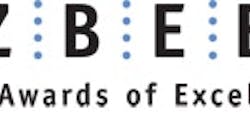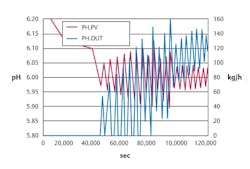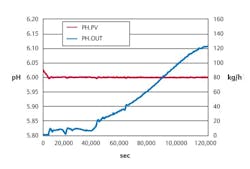American Society of Business Publication Editors (ASBPE) Azbee Awards are highly competitive and celebrate the highest quality reporting, editing and design in business-to-business, trade, association and professional publications. The awards honor all types of publications including magazines, newspapers, newsletters, websites, and digital media.
You’re ready. Installation is complete. Your distributed control system (DCS) modernization project nears its end. The control loops of the distillation column have been in manual for the last four hours to allow a hot cutover to the new DCS. The project engineering team said the new controls should work just like the old ones.The operator puts the control loops in the proper mode. Everything looks good initially. Thirty minutes later, though, the key loops on the column start to cycle. Soon, the top and bottom composition (temperature) loops have hit their respective alarm limits, indicating near out-of-spec products. The operator takes manual control trying to recover. It’s too late. The overhead and bottom streams have switched to recycle mode.
Now the team’s focus switches to troubleshooting. This, of course, delays the modernization project and cutover. Risks to both costs and schedule rise. Management looks at you and asks: “What just happened?”
After hours of investigation, the control engineer says that many aspects of the proportional-integral-derivative (PID) control conversion weren’t considered when moving from the legacy DCS to the modern automation system.
Appreciate The Differences
Nightmarish stories of modernizations gone wrong might make some people reach for spare-parts order sheets to keep their vintage DCS on life support. However, modernizations in chemical processing can and will have happy endings when well planned. Today’s DCSs bring benefits that old systems can’t match: productivity, process availability and enterprise profit increases to name a few. These are lasting differences that create successful operations.
Proper controller tuning paves the way for state-based control algorithms and other high-value functionality. Tools available now for systems provide help with auto tuning and advanced tuning techniques. In addition, knowledgeable control engineers can help with complex problems using the functionality correctly. In fact, controller tuning techniques can be used to minimize impact of any upsets or disturbances in hot cutovers as well as improve control performance after cold cutover startups.
Table 1. Most platforms relied on either a standard form or a series form.
Consider that modernization is not just replacing in kind, one for one. Project teams must focus on forward engineering the settings to attain optimal control and process performance. That means concentrating on improvements that are attainable, such as implementing existing functionality with new features to ease use and maintenance. In addition, look at changes with new relatively simple features (e.g., an easily selectable PID structure to reduce process disturbances) that may not have existed in the legacy DCS; these can improve control and reduce variability. Lastly, explore using new embedded supervisory features such as model predictive control (MPC) that can be designed into the project, turned on shortly after the process is up and running, and bring big value to your process.
By using a forward engineering methodology, planning for new control requirements and optimizing the new system, a distillation process, for example, could see improvements such as these:
• 40–80% reduction in quality variation;
• 5–10% increase in throughput;
• 0–4% drop in operations and maintenance costs;
• 10–20% decrease in safety or environmental incident risk;
• 5–10% cut in energy costs; and
• 5–10% decline in product inventories by reducing rework and off-specification product.
Not Like Yesterday’s PID
Today’s PID differs significantly from that of legacy systems. The main reason is that current DCSs have much more power and include many useful control features inside the function blocks. Modernization teams must think about the new functionality in addition to translating functionality from the old to the new system. All this must be done on a tight timeline so the organization doesn’t lose time or miss profits.
Many people today don’t realize that PID control algorithms differ from one legacy system to another. Back in the 1970s and 1980s when DCS control became more widespread, control engineers became familiar with the options in their chosen DCS. Today’s modern systems usually offer many options in the PID implementation. The conversion of the controller tuning and other PID features depends upon both the legacy system options and those of the new system. The conversion of these nuances and variations tends to show up at inconvenient times — like during plant startup after a system modernization.
ID Your PID
First, determine the PID form and structure used by your old DCS. The most common PID forms typically are series or standard, with the difference being in how the derivative action is applied mathematically. Less common is a third form called parallel. The use of different names for the form, e.g., interacting rather than series, can further complicate ascertaining the legacy PID form. An equation or block diagram on the PID function in the legacy system documentation is helpful in confirming the form. The PID structure determines whether the proportional and derivative action is applied to the error or to the process variable (PV) and should be documented for each loop. Next, ascertain the units of the tuning parameters in the legacy system. These can vary widely from system to system and, in some, can be set on a loop-by-loop basis (integral time set as seconds, minutes or hours).
The options for form, structure and tuning parameter units depend upon the legacy control system implemented and may involve a system-wide selection or a choice for each PID. Modern control systems typically provide both series and standard form options on a per-loop basis; you just need to know which one to choose. Table 1 lists some platforms and what type(s) of form each uses. We recommend that you standardize on one form (typically the standard) in the new system and properly convert the tuning from the legacy system based on the form and tuning parameter units of the legacy and new systems.
Other features that may have been implemented in the previous DCS also require consideration. These might include the structure (error handling), additive or multiplicative feedforward, nonlinear gain options, deadtime compensation and anti-reset windup settings, among many other possibilities.
In a recent modernization project, a Provox user was transitioning to a modern DeltaV DCS. The user had 14 fermenters that had been operating well for years. After the cutover of two fermenters, the pH cycled dramatically (Figure 1) — unlike before the cutover.
Running with this kind of variability on a batch means loss of production and profits, potentially leading to wasted time and expensive chemicals to fix the batch. Obviously, this oversight was costly and delayed production and product delivery. Some detailed engineering early in the project could have easily avoided the problem.
Figure 1. For many hours after cutover, the pH cycled dramatically due an incorrect form being used when moving from the old to the new system.
What had happened in this case was that a different PID form was selected for the conversion but the units for the tuning parameters weren’t taken into account. To correct the problem, the loop was placed in manual, the correct tuning for the selected form was calculated so a download wasn’t needed, and the loop then was returned to auto. The pH control performance then dramatically improved (Figure 2).
Some visual signs at startup may indicate a problem with the converted tuning or other PID options. For instance, if you notice any of the following, start by looking at the PID tuning and control feature conversions:
1. Cycling controller outputs or PVs when in auto;
2. Loop control that either is super slow, super fast or “just different” compared to the legacy system; and
3. Loop in control but stabilizing at an offset to the set point.
Prevent Common Mistakes
With some forethought, migration teams can plan actions that help avoid startup surprises and regrets. In fact, by relying on control engineers and experts, the solutions can be incorporated into the tools used in the modernization.
• Know your legacy system conversion form, structure and the tuning parameter units implemented. In some legacy systems, these options are chosen on a system-wide basis, in others on a loop-by-loop basis. Also, understand the options available in the new system.
• Reference older system documentation to understand how the PID control was implemented. This can be tricky and needs a careful eye. Legacy documentation can be confusing, with words and definitions used inconsistently both within the documentation and between vendor platforms.
• Use conversion tools to get the mapping right between systems and eliminate manual errors. Some of these tools are readily available from the vendor or can be developed with simple macros within a spreadsheet. Note that the tuning conversion depends upon the form and tuning parameter units for the legacy and new system on each loop. The new system doesn’t have to use the same form as the legacy one but this must be taken into account in the tuning conversion.
Figure 2. Providing the proper PID form returned pH to control and stopped output cycling.
• Don’t make system-wide assumptions. Each PID block could have a different implementation.
• Verify all critical loops. Closely examine the top 10–15% of the plant’s loops.
• If converting PLC (programmable logic controller) tuning to DCS, pay extra attention to how PID is implemented. PIDs within a PLC are implemented differently than within a DCS. Scaling, tracking, PV filtering, derivative gain limiting, and velocity or positional algorithms all will impact the PID conversion.
Trouble-Free Transition
By planning upfront and using some forward-thinking engineering techniques, your modernization can go smoothly for a win-win situation: a win for your team now and a win for your team living with the facility and the new automation system.
LAURIE BEN is director of global modernization business development for Emerson Automation Solutions, Round Rock, Texas. AARON CREWS is director of global modernization solutions for Emerson Automation Solutions in Round Rock, Texas. JAMES BEALL is principal process control consultant for Emerson Automation Solutions in Round Rock, Texas. Email them at [email protected], [email protected] and [email protected].







